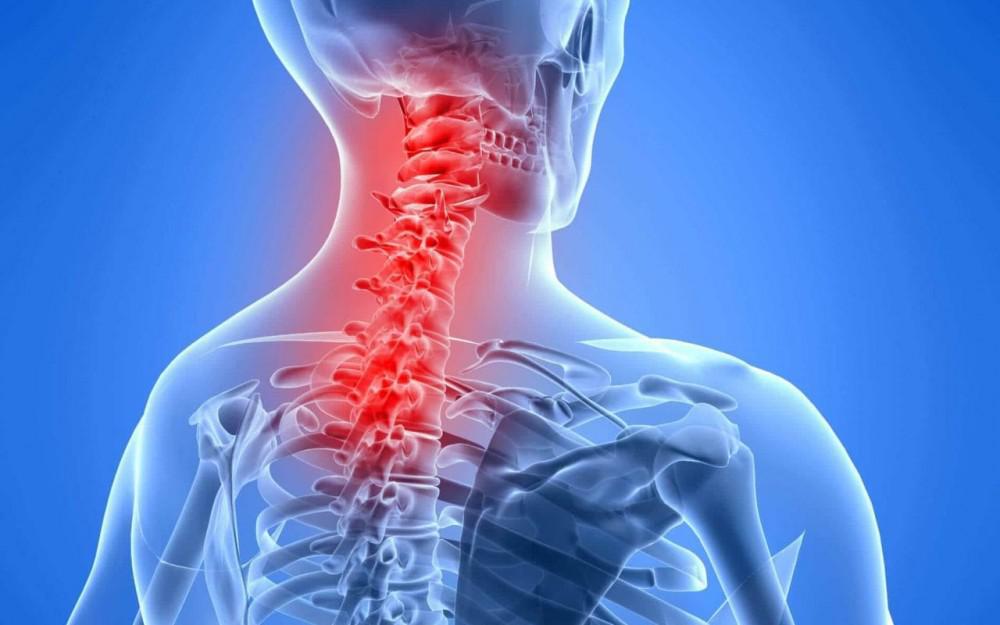Hello!
 Do you remember ever sleeping in an awkward position, then having to struggle to tie your shoes due to a stiff neck? Do you remember spending a whole day sitting at a desk and realizing the strain it places on your neck? You probably stretched, got some medication, and assumed that the stiffness would go away.
Do you remember ever sleeping in an awkward position, then having to struggle to tie your shoes due to a stiff neck? Do you remember spending a whole day sitting at a desk and realizing the strain it places on your neck? You probably stretched, got some medication, and assumed that the stiffness would go away.
Neck pain can also be caused by poor posture or bad sleeping habits. Trauma, chronic illnesses, injuries, and other causes of neck discomfort may all contribute to the problem. If you are unsure of the cause or suspect that it may be a long-term injury or trauma, consult a doctor immediately.
The problem won’t improve if you don’t seek medical attention. It could even get worse. Continue reading to learn if you should see a doctor or simply relax and apply an Ice Pack to your neck pain.
Tech Neck
 Tech neck (or text neck) is the collective term for neck stiffness and pain caused by constant staring at smartphones or other electronic gadgets.
Tech neck (or text neck) is the collective term for neck stiffness and pain caused by constant staring at smartphones or other electronic gadgets.
The average head weighs between 10 and 12 pounds. Gazing down can cause 50 to 60 pounds of strain on the neck. This excessive pressure can cause neck discomfort, especially if it is used for a prolonged period.
Tension or Stress Headaches
Headaches can also be caused by neck pain. These headaches can be caused by excessive emotional stress or prolonged muscular strain.
Also read: Top 6 Tips to Stay Focused on Your Financial Goals
Strained or Sprained Muscles
 A strained or sprained cervical muscle is another common cause of neck pain.
A strained or sprained cervical muscle is another common cause of neck pain.
These strains can be caused by a variety of factors, including sports injuries, poor sleeping habits, lifting heavy objects, and abrupt movements that place too much stress on the neck muscles.
Whiplash
Whiplash, as the name implies, is when your head shakes suddenly back and forth or side to side. This motion can strain the neck’s muscles and vertebrae as well as nerves. It can sometimes cause stiffness or pain in the neck. Whiplash can be caused by any type of neck trauma, with the most common being from car accidents. It can also be caused by contact sports like football.
 Children and infants are at greater risk of suffering serious whiplash injuries due to their small heads and fragile necks. Because of their vulnerability, they are more susceptible to whiplash due to excessive shaking. With gentle care and time, whiplash can be treated. However, toddlers and newborns who have suffered from a brain injury and persistent nerve damage may experience developmental delays. Adults with whiplash who do not seek treatment for their condition risk losing their sense of touch and mobility.
Children and infants are at greater risk of suffering serious whiplash injuries due to their small heads and fragile necks. Because of their vulnerability, they are more susceptible to whiplash due to excessive shaking. With gentle care and time, whiplash can be treated. However, toddlers and newborns who have suffered from a brain injury and persistent nerve damage may experience developmental delays. Adults with whiplash who do not seek treatment for their condition risk losing their sense of touch and mobility.
Adults with whiplash injuries that may have caused the serious injury should see a doctor immediately. This is to make sure the whiplash is not too severe and to look for additional injuries. Because of their delicate bodies, infant whiplash sufferers require immediate medical attention.
Osteoarthritis
Although you may not think about it, your joints have more than one hinge. Cartilage, a tough tissue that protects your joints’ bones, is what you call the shielding of cartilage. The cartilage covers the points where two or three bones connect. It prevents bones from rubbing against each other and causing them to break.
 Osteoarthritis is a chronic disease that affects people between their mid- and late years. Friction between bones happens when the cartilage between the joints wears down and becomes thin. Another sign of osteoarthritis is synovial membrane inflammation. These membranes allow for normal joint mobility, but they can become inflamed and hot.
Osteoarthritis is a chronic disease that affects people between their mid- and late years. Friction between bones happens when the cartilage between the joints wears down and becomes thin. Another sign of osteoarthritis is synovial membrane inflammation. These membranes allow for normal joint mobility, but they can become inflamed and hot.
Osteoarthritis symptoms can include joint inflammation, stiffness, pain, swelling, and edema. All possible targets include the neck, elbows, knees, and knees. The constant friction between moving joints causes this condition to worsen over time. Sometimes, anti-inflammatory medications and physical therapy are used. Treatment is usually tailored to the patient’s history and medical needs.
Fibromyalgia
 Fibromyalgia is the most common cause of musculoskeletal pain among Americans. Fibromyalgia can occur for a variety of reasons. They may be caused by psychological or physical traumas, or they could develop slowly without any clear explanation.
Fibromyalgia is the most common cause of musculoskeletal pain among Americans. Fibromyalgia can occur for a variety of reasons. They may be caused by psychological or physical traumas, or they could develop slowly without any clear explanation.
This illness is characterized by chronic, widespread muscular pain, sleep problems, cognitive issues, and exhaustion. Fibromyalgia patients may experience different symptoms. Some symptoms can go unnoticed long-term. Fibromyalgia must be treated as soon as possible. If left untreated, it can cause severe emotional stress. Although there is no known treatment for Fibromyalgia at this time, you can manage your symptoms using a variety of drugs, such as antidepressants and painkillers.
Pinched Nerves
Your nerves are responsible for your ability to sense bodily sensations such as warmth, touch, pressure, and pressure. A nerve may be compressed between bones or tissues, causing sudden pain that seems unrelated. Pinched nerves can be caused by a slipped disc, spinal compression, and aging cartilage.
Spinal Tumor
 Uncontrolled cell proliferation can cause a tumor, an abnormal mass of tissue. There are two types of tumors: benign and malignant.
Uncontrolled cell proliferation can cause a tumor, an abnormal mass of tissue. There are two types of tumors: benign and malignant.
A benign tumor is considered safe until it becomes too large or affects other vital organs. Although it may continue to grow, it does not spread to surrounding tissue.
Malignant tumors, on the contrary, can infiltrate surrounding tissues, and sometimes spread throughout the body via the bloodstream or lymph nodes. Malignant tumors can become deadly if left untreated.
Stiffness or soreness in your neck can also be caused by tumors of the spine and brain. Primary and secondary spine tumors can cause pain. Secondary spine tumors often have benign causes. Secondary tumors that progress to the spine may originate in other parts of the body. These tumors can be fatal.
Malignant tumors must be treated by a specialist. To determine if it is a malignant or benign tumor, consult a doctor immediately if you notice a bump on your neck.
Also read:
- 5 Creative Recruitment Strategies to Hire the Best People
- How A Successful Master Data Program Can Improve Your Business
- Common Problems Faced By Nigerian Expatriates
In Conclusion
 There are many causes of neck pain and different symptoms. Therefore, there are many options for neck pain treatment. It is important to identify the root cause of neck pain and any related symptoms. Because you may be treating multiple causes at once, a comprehensive assessment is necessary to determine the best course.
There are many causes of neck pain and different symptoms. Therefore, there are many options for neck pain treatment. It is important to identify the root cause of neck pain and any related symptoms. Because you may be treating multiple causes at once, a comprehensive assessment is necessary to determine the best course.
After a diagnosis is made, your doctor will review all available treatments and discuss them with you. Together, you will create a therapy plan that best suits your needs, and your lifestyle, and speeds up your recovery.
Thank you!
Join us on social media!
See you!






